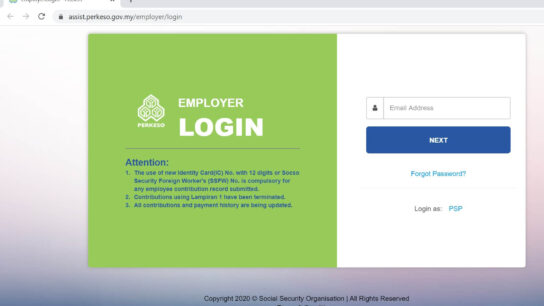Introduction to Raterpoint
Raterpoint has emerged as a dynamic tool designed to revolutionize how data is gathered, analyzed, and utilized. At its core, Raterpoint is a versatile platform that facilitates performance evaluation and decision-making processes across various domains. Whether it’s used for academic assessments, corporate reviews, or customer feedback, Raterpoint’s provides a streamlined, data-driven approach that enhances productivity and outcomes.
The platform’s origins can be traced to a growing demand for tools that combine efficiency with accuracy. In an era where data is paramount, Raterpoint fills a crucial gap by offering real-time insights and actionable analytics. Its flexibility allows it to adapt to different industries, making it an indispensable asset for organizations striving to optimize their workflows.
In today’s fast-paced world, the ability to make informed decisions is more important than ever. Raterpoint’s innovative features empower users to evaluate performance metrics seamlessly, ensuring that critical decisions are backed by reliable data. As a result, Raterpoint’s has gained significant traction, cementing its place as a valuable tool across industries.
Key Features of Raterpoint
Raterpoint stands out due to its comprehensive features that cater to a wide range of needs. One of its most notable attributes is its scalability, which allows it to be tailored to both small businesses and large enterprises. Whether you’re managing a team of five or five thousand, Raterpoint adjusts to meet your specific requirements.
Another defining feature is its robust data privacy and security measures. With growing concerns about cyber threats, Raterpoint’s ensures that sensitive information remains protected through encryption and compliance with global data protection standards. This makes it a trustworthy choice for organizations that prioritize confidentiality.
User-friendliness is also a hallmark of Raterpoint. Its intuitive interface requires minimal training, allowing users to quickly adapt and utilize its capabilities. The platform also offers real-time reporting, enabling stakeholders to access actionable insights instantly. These features collectively make Raterpoint a powerful tool for enhancing efficiency and fostering informed decision-making.
Applications of Raterpoint Across Industries
Education and Learning Management
In the education sector, Raterpoint is revolutionizing how academic institutions assess performance. By automating student evaluations and aggregating feedback, the platform enables educators to identify areas for improvement. Raterpoint also supports e-learning platforms, ensuring a seamless experience for remote learners.
Corporate Use Cases
Corporations benefit immensely from Raterpoint’s ability to track employee performance. HR departments can leverage its analytics to identify high-performing individuals, address skill gaps, and streamline hiring processes. The platform’s insights are instrumental in shaping organizational strategies and enhancing workforce productivity.
Healthcare Integration
In healthcare, patient satisfaction is paramount. Raterpoint’s aids medical institutions in collecting and analyzing feedback, helping them improve service quality. From monitoring patient experiences to optimizing healthcare delivery, Raterpoint’s analytics play a vital role in ensuring positive outcomes.
E-commerce and Customer Experience
Raterpoint is a game-changer for e-commerce platforms striving to enhance customer satisfaction. By analyzing feedback and behavior patterns, the platform enables businesses to offer personalized shopping experiences. Additionally, Raterpoint’s insights help companies identify trends, adjust strategies, and boost overall customer loyalty.
Benefits of Implementing Raterpoint
The adoption of Raterpoint comes with numerous benefits. At the forefront is its ability to enhance decision-making through actionable insights. By providing detailed analytics, Raterpoint empowers organizations to make informed choices, minimizing risks and maximizing opportunities.
Operational efficiency is another significant advantage. Raterpoint automates repetitive tasks, freeing up valuable time and resources. Its real-time monitoring capabilities also ensure that stakeholders stay updated on key metrics, allowing for prompt responses to emerging challenges.
Cost-effectiveness is yet another reason to consider Raterpoint. By streamlining workflows and reducing inefficiencies, the platform delivers a high return on investment. This makes it a viable option for organizations looking to optimize their operations without exceeding budgets.
Challenges and Limitations of Raterpoint
While Raterpoint’s offers numerous advantages, it is not without challenges. One common issue is the potential for integration difficulties with existing systems. Organizations may need to invest time and resources to ensure a smooth transition.
Scalability can also be a concern for larger enterprises. Although Raterpoint is designed to adapt to various scales, managing extensive data sets may pose challenges without proper configuration. Additionally, users must be vigilant about data input accuracy, as errors can impact the platform’s analytics.
Despite these limitations, Raterpoint remains a valuable tool. By addressing these challenges through proper planning and training, organizations can fully harness its potential.
Tips for Effective Use of Raterpoint
To make the most of Raterpoint, it’s essential to follow best practices. Start by providing comprehensive training to users, ensuring they understand the platform’s features and capabilities. This will minimize errors and maximize efficiency.
Integrating Raterpoint’s with existing systems is another critical step. Work with IT specialists to create a seamless connection between Raterpoint and your organization’s tools. This will enhance data flow and improve overall functionality.
Long-term growth requires a strategic approach to using Raterpoint. Set clear objectives and monitor progress regularly. By aligning the platform’s capabilities with your organization’s goals, you can ensure sustained success and productivity.
Future of Raterpoint
The future of Raterpoint’s looks promising, with advancements in AI and machine learning poised to enhance its capabilities further. These technologies will enable even more sophisticated analytics, offering deeper insights and predictions.
Emerging trends suggest that Raterpoint will continue to evolve, adapting to the changing needs of industries. From automation to enhanced user experiences, the platform is set to remain a key player in performance management.
As organizations increasingly embrace digital transformation, Raterpoint’s role in optimizing operations and improving outcomes will only grow. Its potential to shape the future of data-driven decision-making is undeniable.
Conclusion
Raterpoint is more than just a performance management tool—it’s a catalyst for growth and innovation. With its versatile features and wide-ranging applications, it has become an invaluable asset for organizations across industries. By addressing its challenges and leveraging its capabilities effectively, users can unlock its full potential and drive success.
FAQs
What industries can benefit the most from Raterpoint?
Raterpoint’s is widely applicable across education, healthcare, e-commerce, and corporate sectors, offering tailored solutions for each.
Is Raterpoint suitable for small businesses?
Yes, Raterpoint is scalable and can be customized to meet the needs of small businesses as well as large enterprises.
How does Raterpoint ensure data security?
Raterpoint uses advanced encryption and complies with global data protection standards to safeguard sensitive information.
Can Raterpoint integrate with existing tools?
Yes, Raterpoint is designed to integrate seamlessly with most existing systems, ensuring smooth data flow.
What is the future of Raterpoint in the age of AI?
With AI integration, Raterpoint’s is expected to offer even more advanced analytics and predictive capabilities, further enhancing its utility.






